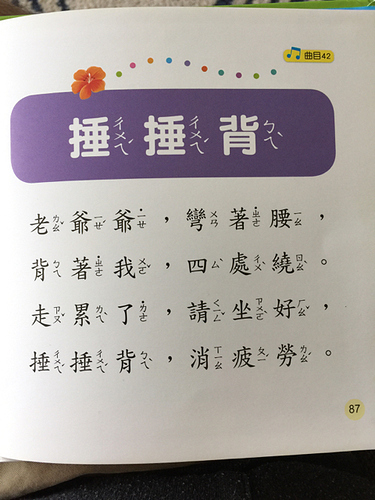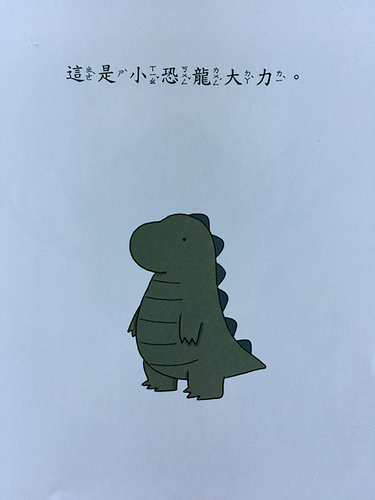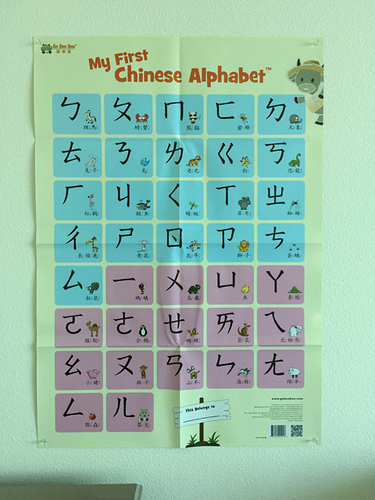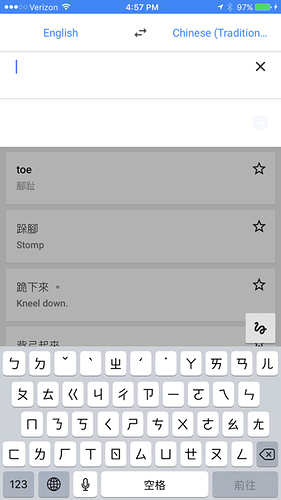I never had the need to learn “bo-po-mo-fa” until I visited the local library to check out some children’s books for my daughter. More than half of the books, particularly those published in Taiwan use this character set alongside classical characters (see excerpts from children’s books Figs 1 & 2 below). I would have been happy to ignore them altogether except that these phonetic symbols confuse the google translate app, making the books unreadable to me if I didn’t know the characters!  Thus, I was forced to the learn the archaic Chinese alphabet. Below are some thoughts on “bo-po-mo-fa”. What are yours?
Thus, I was forced to the learn the archaic Chinese alphabet. Below are some thoughts on “bo-po-mo-fa”. What are yours?
-
It is intuitive. It maps the seemingly infinite character set to a simple pronunciation key that even a child can learn. And if you made it past childhood, you can learn it too!
-
It may be easier to teach. If you are trying to get a 14-month old child to start speaking Chinese, they are quick to pick up on the first several character sounds “b”, “p”, “m”. (“爸爸 媽媽!”)
-
It may advance your reading. If you run into childrens or young adult books like the ones below and know the alphabet, it’s liberating to launch right into reading. No taking pics of the page and translating - no looking up characters. There’s an interesting thing that happens with your brain when you are able to say the characters aloud. It seems to leverage your speaking and listening vocabulary simultaneously, giving way to instant character comprehension, not just recognition.
-
It is the “raw dataset”. If you’re a purist, perhaps there is something to be learned by going to the roots of the language.
-
It’s online presence and resources are elusive. I searched for basic flashcards for my daughter and alas, discontinued. One thing I found was this wall chart (Fig 3 below) but it was the exception rather than the rule. Perhaps I needed to search on Alibaba.
All of this is moot if you’ve already developed your speaking and reading via pinyin, but I have found it to be a simple tool that pays off in unexpected ways. What are your thoughts on this? Is “bo-po-mo-fa” alive and well in Chinese speaking countries? Should 外國人 like myself make use of it even if we know pinyin? If you are starting from scratch with your child, which would you choose?
Have fun everybody!
Fig 1.
Fig 2.
Fig 3.




 But turned out to be another great resource.
But turned out to be another great resource.